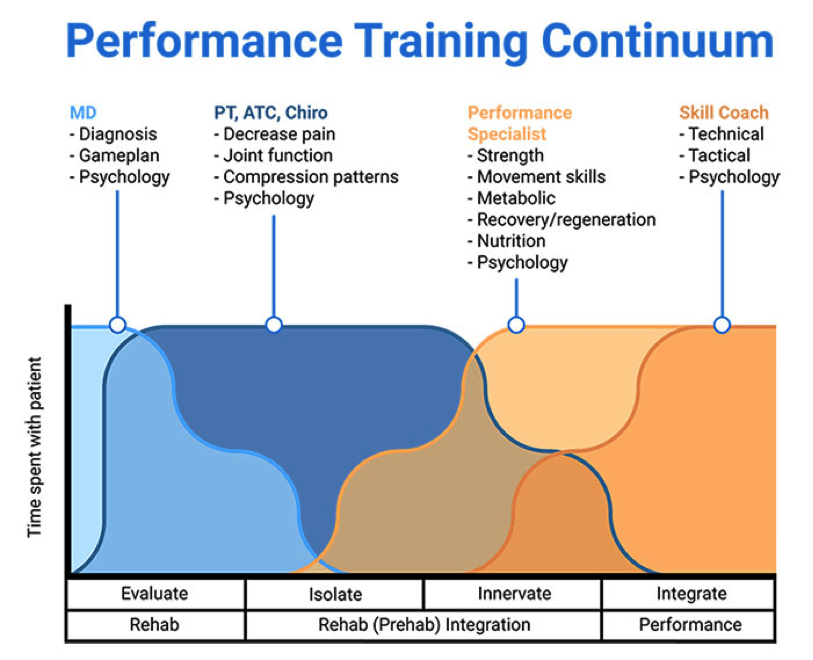
Performance Fitness Training Swing Athletic
Meanwhile, model parameters are tuned to determine the optimal parameter combination that yields the best prediction performance during training. Conclusions Experimental evaluation demonstrates that GCNN-SFM surpasses various advanced essential gene prediction models and achieves an average accuracy of 94.53%.

Stabilization Endurance NASM's Optimum Performance Training
The Optimum Performance Training Model | NASM What is The OPT™ Model? Utilized for over 20 years with the world's top athletes, the NASM OPT™ Model, or Optimum Performance Training® Model, is a fitness training system developed by Dr. Mike Clark.

A Guide to the NASM Optimum Performance Training® Model
The data of 512 elderly patients were randomly divided into a 70% training set and a 30% validation set. The training set data is used to develop the prediction model, and the validation set data is used to verify the performance of the model. The performance of the model was evaluated by the AUC, ACC, recall, F1-score, and precision.

NASM Optimum Performance Training Model Manz Formação
In the context of the Optimum Performance Training ® Model, integrated functional training means that movements are optimised through multiple exercise modalities that optimise neuromuscular stability, functional flexibility, functional strength, core stability, and reactive neuromuscular training.

Coaching for Optimum Performance Shine Models
Summary of Phase 3: Muscular Development (hypertrophy) Training. These are the NASM OPT Model Phase 3 acute variables for resistance exercises in hypertrophy and muscular development training. However, as our experts can attest, it is also important to pay attention to the flexibility, core, balance, plyometric and SAQ guidelines offered in.

The Optimum Performance Training (OPT) Model YouTube
The Optimum Performance Training (OPT™) model provides the health and fit-ness professional with a proven system in which a client's information can simply be plugged in. Program design is creating a purposeful system or plan to achieve a specific goal. To do so, the health and fitness professional must understand acute

The Optimum Performance Training Model NASM
Model architecture refinement is a challenging task in deep learning research fields such as remote photoplethysmography (rPPG). One architectural consideration, the depth of the model, can have significant consequences on the resulting performance. In rPPG models that are overprovisioned with more layers than necessary, redundancies exist, the removal of which can result in faster training.

10 Tips for Effective Employee Performance Coaching AIHR
The Optimal Performance Training (OPT) Model, developed by NASM, is a systematic and progressive approach to address an individual's unique strength-increasing goals, their abilities, and their experience level. It has 5 phases, split among 3 levels, each designed to achieve a specific goals aligned to specific adaptations.

The Optimum Performance Training Model NASM
The NASM made the OPT model to be a planned, systematic, and periodized program for training. It is designed to improve all physical abilities mentioned throughout the textbook. This program should be used and thought of as a staircase, where you start in phase one and climb yourself up the final phase of power, phase 5.

Why You Should Adopt an AthleteCentered Model Structure & Function
Utilized for over 20 years with the world's top athletes, the NASM OPT™ Model, or Optimum Performance Training Model®, is a fitness training system based on scientific evidence and principles, the model is highly adaptable and versatile in its application, progressing individuals through five distinct yet complementary training phases.

Perfect Performance Pyramid Ramsey Voice Studio
Premier Global NASM's expert Tutor Craig explains the different stages and applications of the Optimum Performance Training (OPT) Model Are you interested in.

How to Create a Successful Employee Training and Development Program Through Visual Communication
The Optimum Performance Training® Model £ 145.00 Based on the principles of human movement science (i.e., biomechanics, kinesiology, exercise physiology) Uses an integrated approach to program design (i.e., combines all forms of exercise into one systematic and progressive system) Flexibility training Cardiorespiratory training Core training

Stabilization Endurance NASM's Optimum Performance Training
OPT Level 1: Stabilization Endurance. Reps: 12 to 20. (Single-leg workouts or arm variations: 10 reps each side) Sets: 1 to 3. Tempo: 4/2/1. Intensity: 50 to 70% of 1RM. Rest: 0 to 90 seconds. Circuit option: After warm-up, complete 1 set of all exercises with minimal rest between moves.

NASM OPT Model A Guide to Optimum Performance Training
I. THE OPTIMUM PERFORMANCE TRAINING MODEL A. NASM designed the evidence-based OPT model as a planned, systematic and periodized training program to improve all physical abilities, flexibility, muscular and aerobic endurance, core stabilization, balance, muscular strength, coordination, and power, simultaneously. B.

The NASM Optimum Performance Training (OPT) Model Explained YouTube
Utilized for over 20 years with the world's top athletes, the NASM OPT™ Model, or Optimum Performance Training Model®, is a fitness training system based on scientific evidence and principles, the model is highly adaptable and versatile in its application, progressing individuals through five distinct yet complementary training phases.

A Guide to the NASM Optimum Performance Training® Model
Phase 1: Stabilization Endurance. Improve muscular endurance and body composition. Develop neuromuscular efficiency (coordination) Boost joint stability. Improve posture and flexibility. Stabilization endurance training is a prerequisite for the Strength and Power levels in the NASM OPT model.